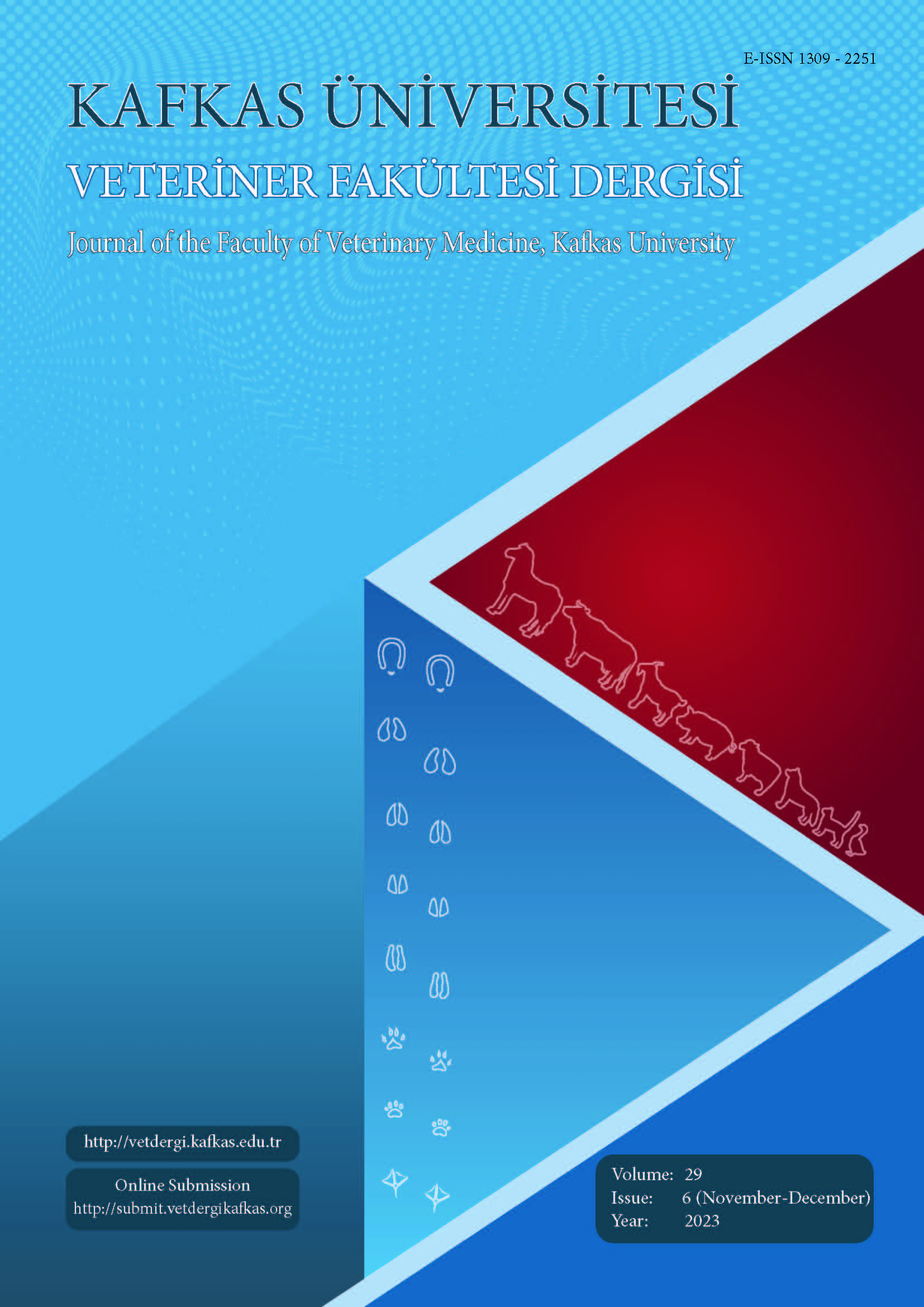
This journal is licensed under a Creative Commons Attribution-NonCommercial 4.0 International License
Kafkas Üniversitesi Veteriner Fakültesi Dergisi
2023 , Vol 29 , Issue 6
Cardioprotective Effect of Intravenous Lipid Emulsion in Bupivacaine- Induced Experimental Cardiac Toxicity
1AdıyamanUniversity, Faculty of Medicine, Anesthesiology and Reanimation Department, TR-02100 Adıyaman - TÜRKİYE2AdıyamanUniversity, Faculty of Medicine, Histology and Embryology Department, TR-02100 Adıyaman - TÜRKİYE DOI : 10.9775/kvfd.2023.30177 The intravenous lipid emulsion (ILE) therapy is known to alleviate clinical symptoms in cases of bupivacaine-induced cardiac toxicity. However, there is insufficient information regarding histopathological damage. This study aimed to investigate whether the use of ILE therapy in rats with experimentally induced bupivacaine-related cardiac toxicity can ameliorate histopathological damage. 28 Wistar albino rats were divided into four groups: control (A), lipid (B), bupivacaine (C), and bupivacaine + lipid (D). After providing monitoring in all groups, group B received 1.5 mL ILE + 0.25 μg/kg/min ILE infusion, group C received 3 μg/kg/min bupivacaine infusion, and group D received 3 μg/kg/min bupivacaine infusion followed by 1.5 mL ILE + 0.25 μg/kg/min ILE infusion after observing cardiac toxicity. Heart rate and respiratory rate were recorded. Blood samples were collected post-procedure to measure LDH, CK-MB, and troponin levels. Cardiac tissue samples were obtained for histopathological examination. There was no significant difference in baseline heart rate and respiratory rate among the groups (P>0.05). However, in the second measurements, heart rate and respiratory rate were higher in group D compared to group C (P<0.05). LDH and CK-MB levels were higher in group C compared to the other groups (P<0.05). Irisin and asprosin scores were higher in group D compared to the other groups (P<0.05). ILE was found to have a cardioprotective effect in the treatment of bupivacaine-induced cardiac toxicity, as it improved both clinical and laboratory parameters. However, histologically, cardiac damage persisted. Keywords : Bupivacaine, Cardiac toxicity, Histopathology, Lipid emulsion










